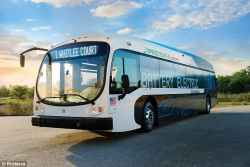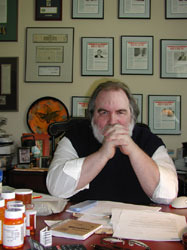 (This is Part II of a three-part series on technology in the 2020s, for publication while I’m at the Heidelberg Laureate Forum in Germany.)
(This is Part II of a three-part series on technology in the 2020s, for publication while I’m at the Heidelberg Laureate Forum in Germany.)
The 2010s were the decade of clouds and devices.
But it was done through human intermediaries. People did the input and the output came from people.
Even if you’re talking to your computer, you’re still in there directing it. Our interfaces in 2019 are, in that way, not that different from what they were in 1979. Fingers are replacing mice, voices are replacing keystrokes, but you’re still making the decisions.
That’s what I think will change most in the 2020s.
It all seems frightfully late to me. I wrote about this stuff as The World of Always On as far back as 2002. Then again, I wrote A Guide to Field Computing in 1993, before the iPhone was a gleam in Steve Jobs’ eye.
The Machine Internet has been delayed by the human element. Right now, most “analysts” still assume this will keep it from happening. They’re pushed out the date for self-driving cars from 2019 to 2029. They think autonomous technology must be perfect to be useful.
It only needs to be better than you.
 The more we can separate people from control over the machines, except in emergencies, the more powerful this technology becomes. What machines do needs to become autonomous, not just from human controllers, but from the human Internet. You keep from running people over by using the same sensor technology that waters the lawn to check whether there are kids on it.
The more we can separate people from control over the machines, except in emergencies, the more powerful this technology becomes. What machines do needs to become autonomous, not just from human controllers, but from the human Internet. You keep from running people over by using the same sensor technology that waters the lawn to check whether there are kids on it.
The whole question of computer security comes down to how slow people are on the uptake. The machine Internet must refuse updates and changes except through authorized professionals, whose access is controlled and secure. Even then, the scheme of control for those changes must be limited. Use the Internet’s resilience for the machine Internet, routing proper control and isolating, then automatically taking out, attempts to override it.
That’s not science fiction. There are lots of computer security programs and systems doing precisely this today on the human Internet. Continue using them on the machine Internet but keep people off it the same way enterprises do it today. Develop new tools separately from production, audit changes to production so they can be tracked, pull software from production based on bad data from the field.
 Most important, accept that there will be problems. Instead of trying to eliminate all dangers, design for mitigation, reducing frequency and severity. We do this with transaction processing right now. Banks and insurers know how to manage risk. This is not rocket science.
Most important, accept that there will be problems. Instead of trying to eliminate all dangers, design for mitigation, reducing frequency and severity. We do this with transaction processing right now. Banks and insurers know how to manage risk. This is not rocket science.
Start on the road to automation with buses. Buses run on designated routes. Give them fare gates and, instead of drivers, employ the equivalent of train conductors, serving the customers instead of driving the bus. It makes for a safer ride. Then adapt bus routes to where people want to go, and when, instead of using the rigid system of routing used now.
Police agencies are starting to use the tools of the machine Internet. They’re linking to home security cameras so they can identify criminals and using that data to make arrests. Most crime has been falling for decades now. You can call it “big brother” all you want, but it works.
 All machines, from jet engines to your refrigerator, should be able to monitor their condition and let you know before a part breaks, so maintenance can be scheduled. Factory automation has made great strides this decade but even Elon Musk knows there’s further to go. No one without a college education, including extensive computer programming experience, should be inside an American factory 10 years from now.
All machines, from jet engines to your refrigerator, should be able to monitor their condition and let you know before a part breaks, so maintenance can be scheduled. Factory automation has made great strides this decade but even Elon Musk knows there’s further to go. No one without a college education, including extensive computer programming experience, should be inside an American factory 10 years from now.
Anything that collects data the way people can, and acts based on data, can be connected and rendered automatic. I should be the last to know about my next heart attack. Heart data should be constantly analyzed, and the ambulance should come to the location of my device without my having to call. Identifying the signs that data shows of an incipient heart attack, stroke or diabetic shock shouldn’t be up to me, or my doctor, but the machine Internet. That’s the real killer app.
 Automating our factories, automating our cities, automating our homes, automating all the functions of life that now require direct human intervention, it’s all possible using the Machine Internet. Yes, that Internet must be hardened against human intervention. That’s where 5G will make its mark, machines gradually learning to take care of us and doing it without being told to.
Automating our factories, automating our cities, automating our homes, automating all the functions of life that now require direct human intervention, it’s all possible using the Machine Internet. Yes, that Internet must be hardened against human intervention. That’s where 5G will make its mark, machines gradually learning to take care of us and doing it without being told to.
This is especially true when looking into the distance and seeing the inevitable. Not just death, but infirmity. My old friend Martin Bayne warned against this decades ago, as Parkinson’s gradually took him, and we’re all going there. Even I’m going there.
Who’s going to wipe your ass when you can’t? Who is going to take care of you when low-cost labor is no longer available to staff our senior centers and nursing homes? What I told him then will come to pass. Machines will do it. There will still be people, but they’ll be serving me, not my bodily functions. Machines will make sure I get my medication. Machines will get me to the bathroom, and machines will clean me up. Machines will produce my food, and care givers will deliver care. They’ll watch me eat, and they’ll talk to me. Maybe even they will be on screens, and I’ll be in the center because I want, I need, to have some people around me, rather than because infirmity forces me into the care of people for basic bodily needs.
Sensors, motes, wireless networks, and Internets on several different levels – people, houses, floors, centers, companies, cities – these are all necessary if we’re to live out our full term. By the end of the coming decade the development of these markets will be well underway.
I for one welcome our coming machine overlords.








